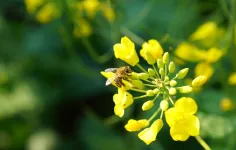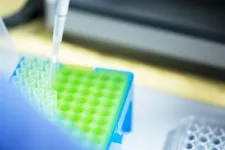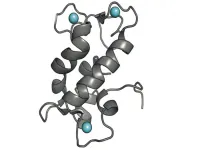(Press-News.org)
In a study published in Science, researchers from the Xishuangbanna Tropical Botanical Garden (XTBG) of the Chinese Academy of Sciences and the University of California San Diego have shown that honey bees use social signal learning to improve their ability to waggle dance.
Social learning shapes honey bee signaling, as it does communication in human infants, birds, and several other vertebrate species, according to the researchers.
Social learning occurs when one individual learns by observing or interacting with another. Eusocial insects (i.e., insects with an advanced level of social organization) use social learning, but it is unclear whether this learning shapes their communication, which can be remarkably sophisticated and cognitively complex.
Honey bees communicate the locations of resources such as food, water, tree resin (propolis) and nest sites to nestmates by performing waggle dances. Honey bee workers use social learning when following the waggle dance to learn the location and quality of resources. However, it is not known whether following the dance can improve the performance of young waggle dancers or whether the dance is completely genetically pre-programmed (innate).
As previously reported, the waggle dance is usually performed by a successful forager, i.e., one who has located a good source of pollen, nectar or water, and provides information about the presence, quality, identity, direction and distance of the source so that nestmates can find and use it.
The researchers created colonies in which they observed the first waggle dances produced by foragers that either had or had not followed other waggle dancers. Each of the five experimental colonies was established with a single cohort of one-day-old bees.
"As these bees aged, we monitored the colonies until we observed the first waggle dances and then observed the same dancers 20 days later when they had more foraging and dancing experience," said Dr. DONG Shihao, first author of the study.
They found that bees that did not have the opportunity to follow any dances before their first dance produced significantly more disordered dances with larger waggle angle divergence errors and incorrectly encoded distance.
"When the same bees were older and had experience of dance following and dancing, they significantly reduced divergence angle errors and produced more orderly dances. However, they were never able to produce normal distance encoding," said DONG.
The results suggest that social signal learning can improve waggle dancing. But why should honey bees use social learning to improve their waggle dancing?
"Learning is a useful way to refine behaviors for local conditions. We suggest that the unique topologies of each colony's dance floor make it advantageous for novice dancers to learn from more experienced ones. Another possibility is that experienced dancers may transmit distance encodings based on local optic flow to nestmates," said TAN Ken of XTBG.
END
Scientists have called for a legally-binding treaty to ensure Earth’s orbit isn’t irreparably harmed by the future expansion of the global space industry.
In the week that nearly 200 countries agreed to a treaty to protect the High Seas after a 20-year process, the experts believe society needs to take the lessons learned from one part of our planet to another.
The number of satellites in orbit is expected to increase from 9,000 today to over 60,000 by 2030, with estimates suggesting there ...
Researchers have built the first ever map showing every single neuron and how they’re wired together in the brain of the fruit fly larva.
This huge step forwards in science will ultimately help us understand the basic principles by which signals travel through the brain at the neural level and lead to behaviour and learning.
The map of the 3016 neurons that make up the larva’s brain and the detailed circuitry of neural pathways within it is known as a ‘connectome’. It’s the largest complete brain connectome described yet.
Professor Marta Zlatic ...
Researchers have analysed image and genomic data from the UK Biobank to find insights into rare diseases of the human eye. These include retinal dystrophies – a group of inherited disorders affecting the retina – which are also the leading cause of blindness certification in working-age adults.
The retina is found at the back of the eye. It’s a layered tissue that receives light and converts it into a signal that can be interpreted by the brain. Each retinal layer comprises different cell types that play a unique role in this light conversion process.
For this study published in the journal PLOS Genetics, the researchers focused ...
Dr. Natasha Kekre is this year’s national winner of a “young investigator award” from the Canadian Society for Clinical Investigation (north_eastexternal linkCSCI), an organization that represents early career healthcare researchers across the country.
An exceptionally motivated scientist, Dr. Kekre is an associate professor at the uOttawa Faculty of Medicine, as well as a scientist and hematologist at The Ottawa Hospital.
Dr. Kekre says she’s been “very fortunate” to be in Ottawa’s dynamic medical research hub and benefit from having internationally ...
A phase 3 clinical trial (research study) of a targeted therapy called nirogacestat has found that the drug significantly shrank desmoid tumors in 41% of patients.
Desmoid tumors (also known as aggressive fibromatosis) are a rare type of soft tissue tumor, and MSK has a team of doctors who are dedicated to treating them.
When Dana Avellino, now 36, first noticed a lump near her groin in the summer of 2018, she thought it was related her recent cesarean section. Her younger daughter was only 2 months old at the time. When a biopsy revealed that the lump was a sarcoma, a type of tumor that ...
Researchers at the University of Illinois Urbana-Champaign have detected the existence of a charge density wave of electrons that acquires mass as it interacts with the background lattice ions of the material over long distances.
This new research, led by assistant professor Fahad Mahmood (Physics, Materials Research Laboratory) and postdoc Soyeun Kim (current postdoc at Stanford Institute for Materials and Energy Sciences, SLAC National Accelerator Laboratory), is a direct measurement of the Anderson-Higgs mechanism (of mass acquisition) and the first known demonstration of a massive phason in a charge ...
New research from Memorial Sloan Kettering Cancer Center (MSK) and the Sloan Kettering Institute — a hub for basic science and translational research within MSK — offers new proof-of-concept compounds against acute myeloid leukemia; reports results from a phase 1 clinical trial appraising two drugs against low-grade glioma; examines MSK’s first-in-the-nation program integrating herbal medicine into oncology care; and identifies how high-grade histologic patterns ...
UNIVERSITY PARK, Pa. — A new biosensor engineered by Penn State researchers offers scientists the first dynamic glimpses of manganese, an elusive metal ion that is essential for life.
The researchers engineered the sensor from a natural protein called lanmodulin, which binds rare earth elements with high selectivity and was discovered 5 years ago by some of the Penn State researchers involved in the present study.
They were able to genetically reprogram the protein to favor manganese over other common transition ...
It’s a tough job, but someone’s got to do it. In this case, the “job” is the breakdown of lignin, the structural biopolymer that gives stems, bark and branches their signature woodiness. One of the most abundant terrestrial polymers on Earth, lignin surrounds valuable plant fibers and other molecules that could be converted into biofuels and other commodity chemicals — if we could only get past that rigid plant cell wall.
Fortunately, the rather laborious process already occurs in the guts of large herbivores through the actions of anaerobic microbes that cows, goats and sheep rely on to release the nutrients ...
New research from the University of Georgia suggests most people don’t understand the difference between a preprint and a published academic journal article.
Preprints are research papers that haven’t undergone peer review, the process by which studies’ findings are validated by experts who weren’t involved with the research themselves.
The study found the majority of readers have little to no understanding of what a preprint actually is. That lack of understanding could lead to public distrust in science since findings and how those findings are described can change between the preprint phase and ...







